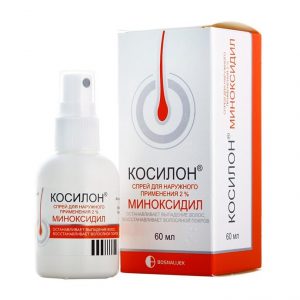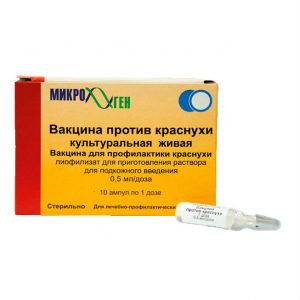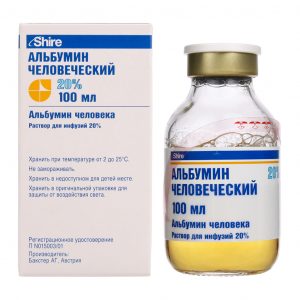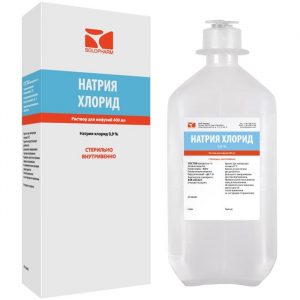Description
Latin name
GEMITA
Release form
Lyophilisate for solution for infusion.
Packing
In a bottle of 200 mg. In a cardboard box 1 bottle.
Pharmacological action
Pharmacodynamics
Antitumor drug, antimetabolite group of pyrimidine analogues, inhibits DNA synthesis. It shows cyclospecificity, acting on cells in phase S and at the boundary of phases G1 and S. It is metabolized in the cell under the action of nucleoside kinases to active diphosphate and triphosphate nucleosides. Diphosphate nucleosides inhibit the action of ribonucleotide reductase (the only enzyme that catalyzes the formation of deoxynucleoside triphosphates necessary for DNA synthesis). Triphosphate nucleosides are able to integrate into the DNA chain (to a lesser extent RNA), which leads to the cessation of further DNA synthesis and programmed cell lysis (apoptosis).
Gemcitabine is also a powerful radiosensitizing agent, even at concentrations lower than cytotoxic.
Pharmacokinetics of
Cmax gemcitabine (3.2 μg / ml to 45.5 μg / ml) is achieved 5 minutes after the end of the infusion. A pharmacokinetic analysis of single and multiple dose studies indicates that Vd is highly gender dependent. The binding of gemcitabine to plasma proteins is negligible.
In the body, gemcitabine is rapidly metabolized by the action of cytidine deaminase in the liver, kidneys, blood and other tissues, resulting in the formation of gemcitabine mono-, di- and triphosphates, of which gemcitabine di- and triphosphates are considered active.
Gemcitabine is rapidly excreted by the kidneys mainly in the form of an inactive metabolite of 2′-deoxy-2 ‘, 2’-difluoruridine. Less than 10% of the iv dose is found in the urine in the form of unchanged gemcitabine. Systemic clearance, which ranges from about 30 l / h / m2 to 90 l / h / m2, depends on age and gender.
T1 / 2 ranges from 42 minutes to 94 minutes. Subject to the recommended dosage regimen, complete elimination of gemcitabine occurs within 5-11 hours from the start of the infusion. When administered once a week, gemcitabine does not accumulate in the body.
Combination therapy with gemcitabine and paclitaxel. With the joint administration of gemcitabine and paclitaxel, the pharmacokinetics of the drugs does not change.
Combination therapy with gemcitabine and carboplatin. With the joint administration of gemcitabine and carboplatin, the pharmacokinetics of gemcitabine does not change.
Impaired renal function. Mild to moderate renal failure (creatinine clearance 30-80 ml / min) does not significantly affect the pharmacokinetics of gemcitabine.
Indications
Locally advanced or metastatic non-small cell lung cancer as a first-line therapy in combination with cisplatin and monotherapy in elderly patients with functional status, equal to 2 (on the ECOG-BOZ scale)
inoperable, locally recurrent or metastatic breast cancer after neoadjuvant and / or adjuvant therapy with the inclusion of anthracyclines in the absence of contraindications to their purpose as part of combination therapy with paclitaxel srdlkristal locally cancer (cancer of the bladder, renal pelvis, ureter, urethra)
locally advanced or metastatic ovarian cancer as a monotherapy or in combination with carboplatin in atsientov with disease progression after a first-line therapy based on platinum-containing drugs
locally advanced or metastatic pancreatic cancer
locally advanced or metastatic cervical cancer.
Contraindications
Pregnancy
breastfeeding
children under 18 years of age (lack of sufficient data on efficacy and safety)
hypersensitivity to the active substance or to any of the excipients.
With caution: the drug should be prescribed in case of impaired liver and / or kidney function, inhibition of bone marrow hematopoiesis (including against the background of concomitant radiation or chemotherapy), cardiovascular diseases, with metastatic liver damage, hepatitis, alcoholism, with simultaneous radiation therapy, acute infectious diseases of a viral, fungal or bacterial nature (including chicken pox, shingles).
Use during pregnancy and lactation
The use of the drug during pregnancy and the period of lactation (breastfeeding) are contraindicated.
Composition
1 bottle contains:
Active substances: gemcitabine hydrochloride 227.72 mg, which corresponds to the content of gemcitabine 200 mg.
Excipients: mannitol – 200 mg, sodium acetate trihydrate – 12.5 mg, hydrochloric acid – qs to adjust the pH, sodium hydroxide – qs to adjust the pH.
Dosage and administration
The drug Hemit is administered iv drip for 30 minutes.
Non-small cell lung cancer
With monotherapy, the recommended dose is 1000 mg / m2 on the 1st, 8th and 15th days of each 28-day cycle.
In combination therapy with cisplatin, the recommended dose is 1250 mg / m2 on the 1st and 8th day of every 21-day cycle, or 1000 mg / m2 on the 1st, 8th and 15th days of each 28-day cycle. Cisplatin is administered at a dose of 70 mg / m2 on the 1st day of the cycle against the background of water load after infusion of the drug Hemit.
In combination therapy with carboplatin, the recommended dose is 1000 mg / m2 or 1200 mg / m2 on the 1st and 8th day of every 21-day cycle. Carboplatin is administered at a dose of AUC 5.0 mg / ml / min on the 1st day of the cycle after infusion of the drug Hemit.
Breast cancer
With combination therapy as a 1st-line therapy for disease progression after neoadjuvant therapy including anthracyclines, the recommended dose is 1250 mg / m2 on days 1 and 8 in combination with paclitaxel, which is administered after the introduction of the drug Hemitol in a dose of 175 mg / m2 on the 1st day of each 21-day cycle in / drip for about 3 hours
Urothelial cancer
With monotherapy, the recommended dose of the drug is 1250 mg / m2 on the 1st, 8th and 15th days of each 28-day cycle.
In combination therapy, the recommended dose of the drug is -1000 mg / m2 on the 1st, 8th and 15th days in combination with cisplatin, which is administered at a dose of 70 mg / m2 immediately after the infusion of the Hemit preparation in the 1st or 2nd day of every 28 day cycle.
Ovarian cancer
With monotherapy, the recommended dose is 800-1250 mg / m2 on the 1st, 8th and 15th days of every 28-day cycle.
Pancreatic cancer
With monotherapy, the recommended dose is 1000 mg / m2 once a week for 7 weeks, followed by a weekly break. Then the drug is administered on the 1st, 8th and 15th days of each 28-day cycle.
Cervical cancer (locally advanced or metastatic)
Combination therapy: for locally advanced cancer (neoadjuvant) and metastatic cancer, gemcitabine is administered at a dose of 1250 mg / m2 on the 1st and 8th days of every 21-day cycle. Cisplatin is administered after the administration of the drug Hemit at a dose of 70 mg / m2 on the 1st day of the cycle against the background of hyperhydration.
In case of locally advanced cancer with simultaneous radiation therapy, the Hemita drug is administered 1 time per week for 6 weeks at a dose of 125 mg / m2, followed by (immediately after administration of the Hemit drug) administration of cisplatin at a dose of 40 mg / m2 1-2 hours before beginning radiation therapy. Radiation therapy is carried out for 28 fractions, in a single focal dose of 1.8 g, 5 days a week to a total focal dose of 50.4 g.
Change in dose due to hematologic toxicity
Start of the
treatment cycle Regardless of the indications, platelet and granulocyte counts must be estimated before each administration. The condition for starting treatment is an absolute neutrophil count of at least 1,500 / µl and a platelet count of at least 100,000 / µl.
If hematologic toxicity develops during the treatment cycle, the dose of Hemit may be reduced or its administration delayed in accordance with the following recommendations.
Dose modification of the hematite drug used in monotherapy or in combination with cisplatin in the treatment of bladder cancer, non-small cell lung cancer and pancreatic cancer.
Absolute granulocyte count (in 1 μl)
Platelet count (in 1 μl)
% of the previous dose
> 1000
and
> 100 000
100
500-1000
or
50kp 100 000-1 000 500-100
or
<50,000 Postpone administration * * – With an increase in the number of neutrophils to 500 / μl and platelets to 50,000 / μl, the administration of the hematite preparation can be continued as part of the cycle. Dose modification of the hematite drug used in combination with paclitaxel in the treatment of breast cancer. Absolute granulocyte count (in 1 µl) Platelet count (in 1 µl) % of the previous dose of ? 1200 and > 75 000
100
1000-1200
or
50 000-75 000
75
700-1000
and
? 50,000
50
* – Treatment within the cycle does not resume. The next injection of the drug Hemit is carried out on the 1st day of the next cycle when the number of neutrophils reaches at least 1500 / μl and platelets up to 100 000 / μl.
Dose modification of the hematite drug used in combination with carboplatin in the treatment of ovarian cancer.
Absolute granulocyte count (in 1 μl)
Platelet count (in 1 μl)
% of previous dose
> 1500
and
? 100 000
100
1000- <1500 or 75 000-100 000 50 <1000 or <75 000 Postpone administration * * – Treatment within the cycle does not resume. The next administration of the drug Hemit is carried out on the 1st day of the next cycle when the number of neutrophils reaches at least 1500 / μl and platelets up to 100 000 / μl. The dose of the Hemite preparation in the next cycle should be reduced by 25% for all indications in cases where the previous cycle observed: a decrease in the absolute number of neutrophils <500 / μl, lasting more than 5 days a decrease in the absolute number of neutrophils <100 / μl, lasting more 3 days febrile neutropenia – a decrease in platelet count <25,000 / μl cycle was delayed for more than 1 week due to hematological toxicity. Method of administration The infusion of the drug Hemit is usually well tolerated by patients and can be done on an outpatient basis. In case of extravasation, the infusion is stopped and the introduction of the drug into another vein is resumed. After the administration of the drug Hemit, the patient should be observed for some time. Use the drug Hemitis in patients with liver failure or impaired renal function with caution, because there are no sufficient data on the use of the drug in this category of patients. Renal failure of moderate or moderate severity (glomerular filtration rate from 30 ml / min to 80 ml / min) does not significantly affect the pharmacokinetics of gemcitabine. Hemitis is well tolerated by older patients over 65 years of age. There are no specific recommendations for changing the dose of the drug for this population. The drug Hemit is not recommended for children under 18 years of age due to insufficient information on the safety and effectiveness of the drug in this population. Rules for the preparation of solution for infusion As a solvent, only 0.9% sodium chloride solution without preservatives is used. To prepare an infusion solution, the contents of a 200 mg vial are dissolved in at least 5 ml, 1000 mg in at least 25 ml, and 1400 mg in at least 35 ml of a 0.9% sodium chloride solution for injection. Each bottle is gently shaken until the lyophilisate is completely dissolved. The resulting solution should be clear. The maximum concentration of gemcitabine should not exceed 40 mg / ml. Solutions prepared with a concentration higher than 40 mg / ml may be accompanied by incomplete dissolution. The prepared solution of the Hemite preparation containing the desired dose of the preparation is diluted with 0.9% sodium chloride solution for injection before administration in an amount sufficient for a 30-minute iv infusion. Before parenteral administration, it is necessary to visually monitor the prepared solution for mechanical impurities and discoloration. The prepared solution of the Hemite preparation is stable from the physical and chemical point of view for 24 hours, provided that it was stored at a controlled room temperature (from 20 ° C to 25 ° C). From a microbiological point of view, the prepared solution should be used immediately. If the prepared solution was not used immediately and its preparation was carried out under controlled and validated aseptic conditions, storage time is usually not more than 24 hours at room temperature (from 20 ° to 25 ° C). Drug Interaction Radiotherapy Concomitant radiotherapy (concomitant with the administration of hematite or at intervals <7 days before treatment): In this situation, the toxicity of treatment depends on many factors, including the dose of gemcitabine and the frequency of its administration, the radiation dose, the method of radiation therapy, the nature of the irradiated tissue and its volume. Gemcitabine has been shown to have radiosensitizing activity. In one study where patients with non-small cell lung cancer received gemcitabine at a dose of 1000 mg / m2 for 6 consecutive weeks in combination with therapeutic radiation to the chest area, significant toxicity was observed in the form of severe and potentially life-threatening mucosal inflammation esophagitis and pneumonitis, especially in patients with high tissue irradiation (median irradiated tissue volume 4795 cm3). Subsequent studies have shown that that the combination of lower doses of gemcitabine and radiation therapy is better tolerated by patients and is characterized by a predictable toxicity profile. For example, in one phase II study, patients with non-small cell lung cancer were treated with radiation at a dose of 60 Gy together with the administration of gemcitabine (600 mg / m2 4 times) and cisplatin (80 mg / m2 2 times) for 6 weeks. Sequential therapy (break> 7 days): According to existing data, the introduction of gemcitabine more than 7 days before the start of radiation therapy or more than 7 days after its completion is not accompanied by increased toxicity, except for skin lesions associated with the introduction of chemotherapy after irradiation . Gemcitabine treatment may be initiated 7 days after irradiation or after resolution of all acute radiation reactions.
As with the companion, as with the sequential use of gemcitabine and radiation therapy, radiation damage to the irradiated tissues (eg, esophagitis, colitis, and pneumonitis) is possible.
Other types of interaction
When used with live attenuated vaccines, intensification of the vaccine replication process, enhancement of its adverse / adverse effects, and / or decreased antibody production in the patient’s body in response to the administration of the vaccine.
Immunosuppressants (including azathioprine, chlorambucil, GCS, cyclophosphamide, cyclosporine, mercaptopurine) increase the risk of infection.
No compatibility studies have been performed on hematite. It is not recommended to mix Hemit preparation with other medicines.
Overdose
The antidote for gemcitabine is unknown. With the introduction of the drug Gemit in doses up to 5700 mg / m2 in / in a drop for 30 min every 2 weeks the level of toxicity of treatment remained acceptable. If gemcitabine overdose is suspected, the degree of cytopenia should be monitored and supportive therapy prescribed.
Storage conditions
Keep out of the reach of children at a temperature not exceeding 25 ° C. Do not freeze.
Expiration
2 years.
Deystvuyuschee substances
gemcitabine
Terms of delivery from
pharmacies Prescription
Dosage form
Dosage form
infusion target
Fresenius Kabi, Germany




